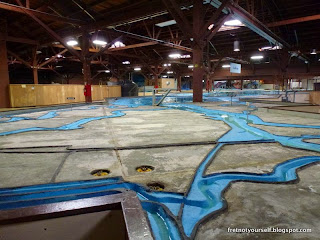 |
| Roll-up cases for watercolor and sketching supplies |
I measured and counted my supplies to make sure the pockets were the correct size. Because of the many watercolor pens my case is 9" by 25" with most pockets about one-inch wide. Originally I made them wider but found the pens slipped out. Narrower spaces grip the pencils better. My third case has three wider pockets to hold other tools such as erasers, rags and a watercolor set.
It takes three rectangles 10" by 26": one for the outside, one for the inside then fold the third in half lengthwise to create the inner pockets. The red one has thin batting and binding. The other two have fusible interfacing on both sides. I sewed and turned them then finished with narrow topstitching. That's my favorite style. Just be careful not to iron until it's turned and lined up properly.
I sewed the pockets after turning the case and before the topstitching. They run the vertical to the nine-inch side. Measure your supplies and figure out your pen/pencil/brush height and width. Count how many you have. Make the case an inch or so taller than your longest. Make it as wide as your number of tools x tool width. As I said, I added a couple of wider pockets to put additional stuff. You'll have your own extras to plan for.
I sewed the pockets after turning the case and before the topstitching. They run the vertical to the nine-inch side. Measure your supplies and figure out your pen/pencil/brush height and width. Count how many you have. Make the case an inch or so taller than your longest. Make it as wide as your number of tools x tool width. As I said, I added a couple of wider pockets to put additional stuff. You'll have your own extras to plan for.
Another variation is the fold-down fabric on the top inside of the pink case that keeps the pens from sliding out. I folded it back in the photo but it will cover the tops of the pens before rolling up the case. Each case has narrow self ties.
I take mine on my morning walk and look for something to sketch. It's working very well.
Enjoy the day!
Ann
Ann









